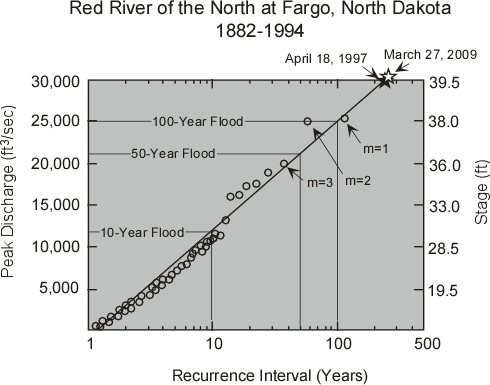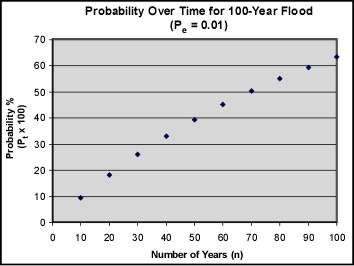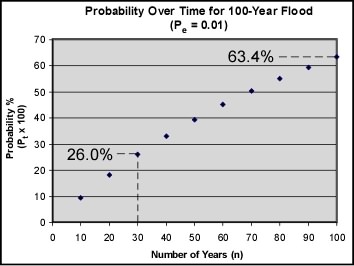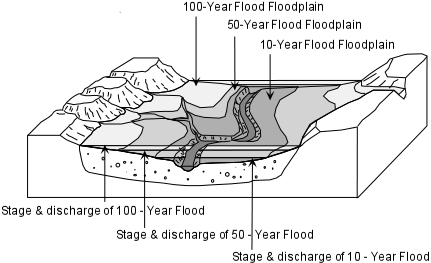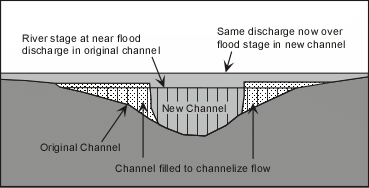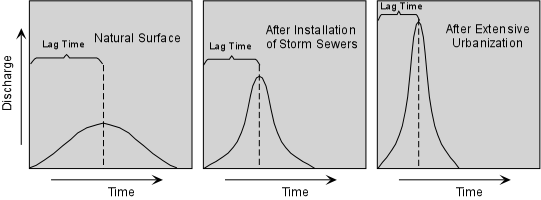Hazards Associated with Flooding
Hazards associated with flooding can be divided into primary hazards that
occur due to contact with water, secondary effects that occur because of the
flooding, such as disruption of services, health impacts such as famine and disease, and
tertiary effects such as changes in the position of river channels. Throughout the
last century flooding has been one of the most costly disasters in terms of both property
damage and human casualties. Major floods in China, for example, killed about 2
million people in 1887, nearly 4 million in 1931, and about 1 million in 1938
The 1993 flood on the
upper Mississippi River and Midwest killed only 47 people, but the U.S. Army Corps of
Engineers estimates the total economic loss at between 15 and 20 billion dollars.
Primary Effects
Again, the primary effects of floods are those due to direct contact with the flood
waters. As seen in the video last lecture, water velocities tend to be high in
floods. As discharge increases velocity increases.
With higher velocities, streams are able to transport larger particles as
suspended load. Such large particles include not only rocks and sediment, but, during
a flood, could include such large objects as automobiles, houses and bridges.
Massive amounts of erosion can be accomplished by flood waters. Such
erosion can undermine bridge structures, levees, and buildings causing their collapse.
Water entering human built structures cause water damage. Even with
minor flooding of homes, furniture is ruined, floors and walls are damaged, and anything
that comes in contact with the water is likely to be damaged or lost. Flooding of
automobiles usually results in damage that cannot easily be repaired.
The high velocity of flood waters allows the water to carry more
sediment as suspended load. When the flood waters retreat, velocity is generally
much lower and sediment is deposited. After retreat of the floodwaters everything is
usually covered with a thick layer of stream deposited mud, including the interior of
buildings.
Flooding of farmland usually results in crop loss. Livestock,
pets, and other animals are often carried away and drown.
Humans that get caught in the high velocity flood waters are often
drowned by the water.
Floodwaters can concentrate garbage, debris, and toxic pollutants that
can cause the secondary effects of health hazards.
|
